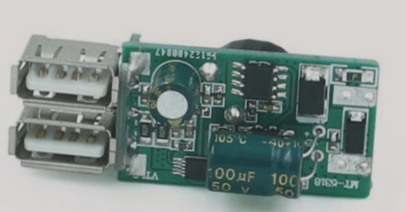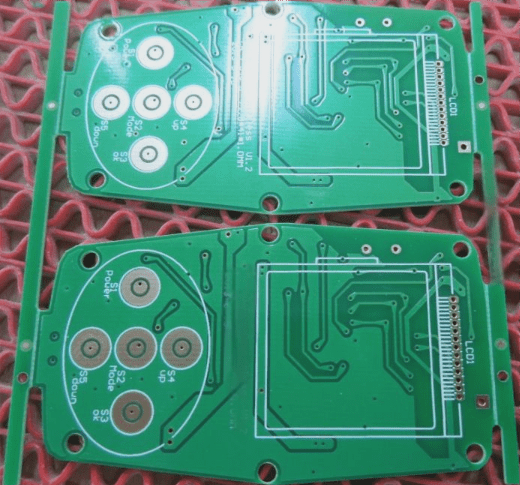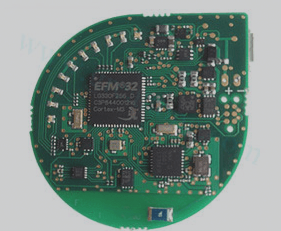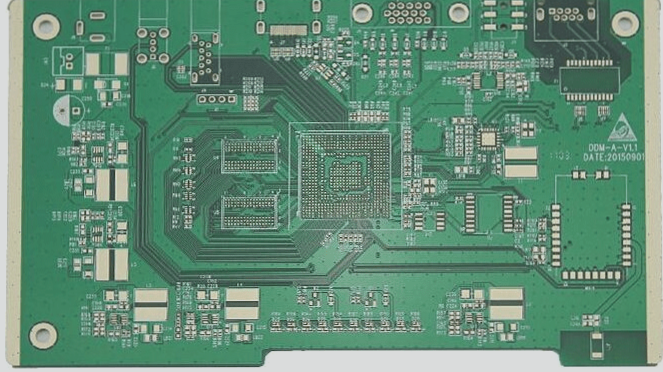**Electric Vehicle Circuit Board Processing**
**What is an electric car circuit board?**
The electric vehicle circuit board serves as the central control unit responsible for managing the start, operation, acceleration, deceleration, speed, and stop functions of various electronic systems in the electric vehicle. It functions as the brain of the vehicle, making it a vital component.
**The main parameters and functional characteristics of the Tianjin electric vehicle circuit board are as follows:**
1. **Rated voltage:** Compatible with 12V, 18V, 24V, 36V, 48V, 60V, 72V, and 80V;
2. **Undervoltage threshold:** The rated voltage of the battery multiplied by 0.875 (±1V);
3. **Current-limiting current:** The current-limiting range is from 4A to 100A (±0.5A);
4. **Static power consumption:** Less than 2W;
5. **Speed limit function:** XS interface. When activated, it restricts the driving speed to within 20 km/h;
6. **Over-speed function:** Magnetic field weakening can be employed to achieve over-speed driving, allowing speeds up to 1.5 times the motor’s rated speed;
7. **Cruise mode:** XH interface. Features both an 8-second automatic cruise and a manual cruise mode.
This revision maintains clarity and technical accuracy while slightly varying the phrasing.
8. **1:1 Power Assist Function**: 1:1 Interface. The controller provides a proportional amount of motor power based on the rider’s pedaling force (speed).
**Electric Vehicle Circuit Board Processing Manufacturers**
Electric vehicle circuit board processing requires specific information:
1. Complete PCB manufacturing documents (Gerber files, placement diagrams, stencil files) and board production specifications.
2. A comprehensive BOM (including model, brand, package, description, etc.).
3. PCBA assembly drawing.
*Note*: To report the PCBA functional test fee, the method of testing must be provided.
**Electric Vehicle Circuit Board Processing Flow**
1. **Customer Order Placement**
Customers place orders based on their actual needs at PCB circuit board processing facilities and specify particular requirements. The processing plant will assess its capabilities to determine if it can fulfill the order. If the manufacturer confirms it can complete the order within the anticipated timeframe, both parties will negotiate the production details.
2. **Customer Provides Production Materials**
Once the customer decides to place an order, they supply a series of documents and lists to the circuit board processing plant, including the necessary PCB electronic files, coordinate files, and BOM lists, which are all mandatory.
3. **Raw Material Procurement**
The circuit board processing facility procures the necessary raw materials from designated suppliers based on the documents provided by the customer.
4. **Incoming Inspection**
Prior to circuit board processing, all raw materials are subjected to rigorous quality inspections to ensure they meet standards before entering production.
5. **PCBA Production**
During circuit board processing, to maintain production quality, manufacturers must strictly control furnace temperatures for both SMD and solder production.
6. **PCBA Testing**
The circuit board processing plant conducts thorough product testing, and only the PCB boards that pass inspection are delivered to the customer.
7. **After-Sales Packaging**
After completing circuit board processing, the product is packaged and subsequently delivered to the customer, concluding the entire processing operation.
**Electric Vehicle Circuit Board Processing Manufacturers**
**What is the Processing Cost of Electric Car Circuit Boards?**
The processing cost for electric car circuit boards in Tianjin includes: PCB board cost + PCB testing fee + PCB engineering fee (for small batches) + component procurement cost (typically increased by 5%) + SMT/DIP welding fee + PCBA testing fee + assembly engineering fee (applicable for small batches) + special packaging and logistics costs (if required by the customer).
**How Long Does it Take to Process Circuit Boards for Electric Vehicles?**
The time structure for processing electric vehicle circuit boards in Tianjin includes: component procurement and PCB production + SMT chip processing + DIP plug-in processing + PCBA testing + finished product assembly.
**Details on Electric Vehicle Circuit Board Processing Times**:
Component purchasing and PCB production are generally initiated simultaneously. PCB production typically takes 3-10 days, while component procurement ranges from 2-15 days, with the arrival time of components being somewhat unpredictable. SMT and DIP processing generally requires an additional 3-5 days. PCBA testing usually takes 1-3 days, and finished product assembly can take 2-5 days.
This revision maintains the original meaning and structure while improving clarity and flow.



